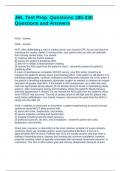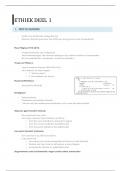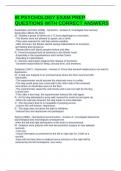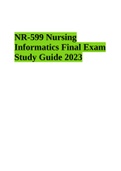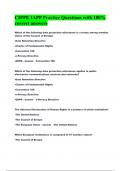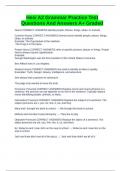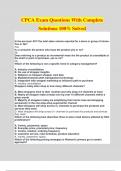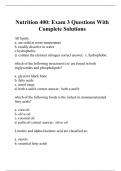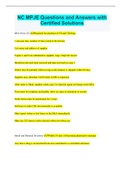Exam (elaborations)
JBL Test Prep. Questions 185-230 Questions and Answers
- Course
- Institution
JBL Test Prep. Questions 185-230 Questions and Answers #185: #186: #187: After defibrillating a man in cardiac arrest, you resume CPR. As you are about to reanalyze his cardiac rhythm 2 minutes later, your partner tells you she can definitely feel a strong carotid pulse. You should: ...
[Show more]
